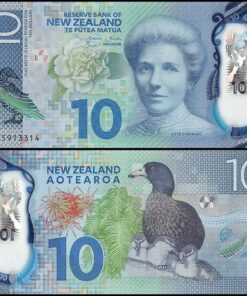Banknotes
A banknote—also called a bill (North American English), paper money, or simply a note—is a type of negotiable promissory note, made by a bank or other licensed authority, payable to the bearer on demand. Banknotes were originally issued by commercial banks, which were legally required to redeem the notes for legal tender (usually gold or silver coin) when presented to the chief cashier of the originating bank. These commercial banknotes only traded at face value in the market served by the issuing bank. Commercial banknotes have primarily been replaced by national banknotes issued by central banks or monetary authorities.
National banknotes are often – but not always – legal tender, meaning that courts of law are required to recognize them as satisfactory payment of money debts. Historically, banks sought to ensure that they could always pay customers in coins when they presented banknotes for payment. This practice of “backing” notes with something of substance is the basis for the history of central banks backing their currencies in gold or silver. Today, most national currencies have no backing in precious metals or commodities and have value only by fiat. With the exception of non-circulating high-value or precious metal issues, coins are used for lower valued monetary units, while banknotes are used for higher values.
product
The Euro Banknotes
The euro banknotes you carry in your wallet are the most tangible symbol of a united Europe. There are more than 29 billion euro banknotes in circulation with a total value of more than €1.5 trillion. We work to ensure that every single one of them is of a consistently high quality and is secure and safe to use anywhere in the world. This helps to foster confidence and trust in our single currency, both as a means of payment and as a store of value.
SHOP NOWBanknote production and stocks
The production of euro banknotes is a combined effort by the national central banks and the ECB. It begins with calculations for the number of banknotes required each year. Enough new banknotes need to be produced to replace unfit banknotes, to meet expected increases in demand – such as seasonal peaks – and to cope with unexpected surges in demand. Forecasts of the demand for euro banknotes for the year ahead are provided by the NCBs, and a central forecast is made by the ECB. Under the supervision of the ECB, the NCBs redistribute the banknotes to avoid shortages or surpluses in any one country.










